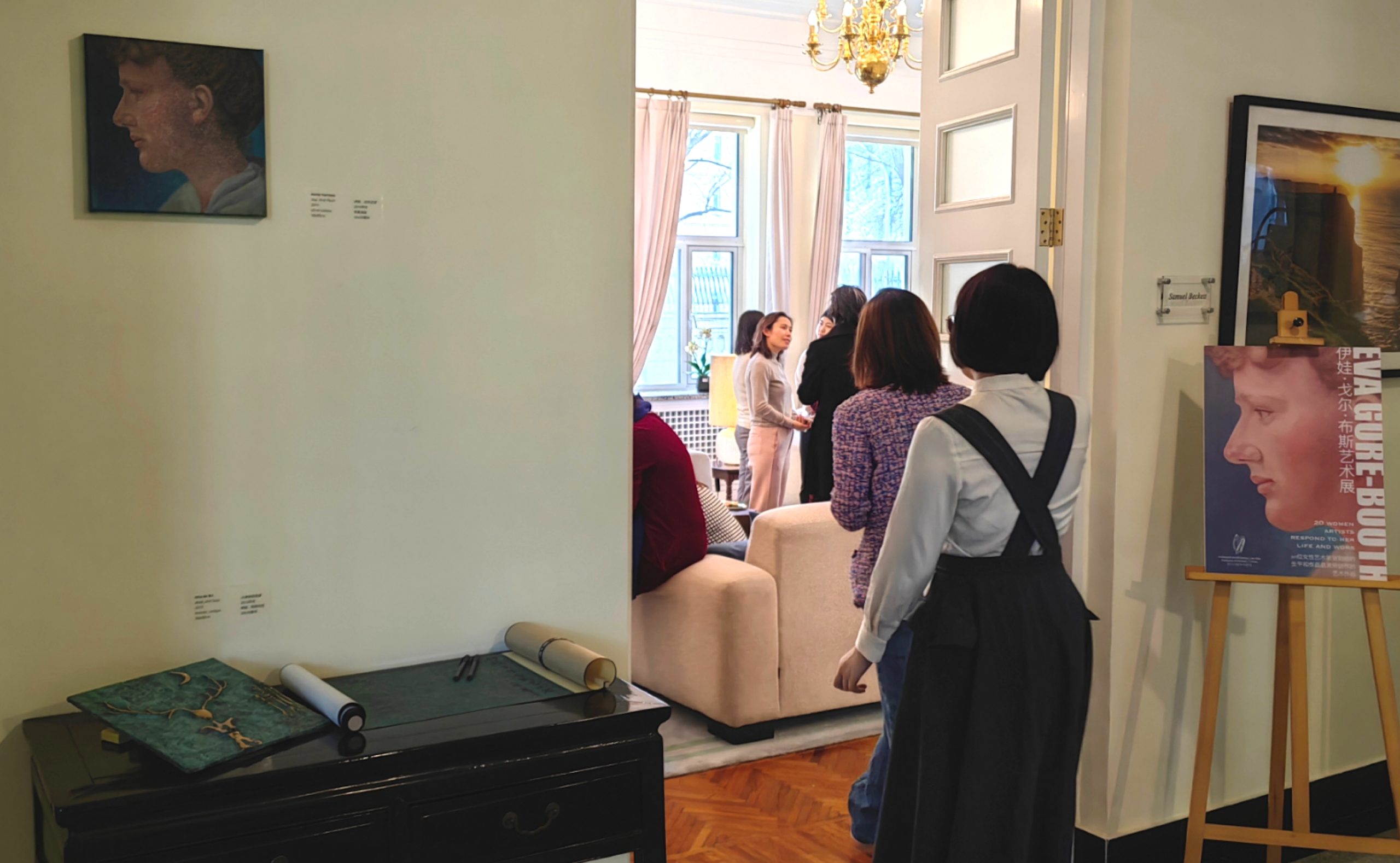
Eva Gore- Booth was poet and playwright, suffragist, workers’ rights campaigner, social revolutionary, pacifist and lesser-known sister of Countess Constance Markievicz, born in Lissadell County Sligo 150 years ago.

After Ambassador Dr Ann Derwin addressed the network event I was asked to speak about artworks on exhibition at the embassy and their relation to the story of Eva Gore-Booth. The artworks were originally part of a larger exhibition which took place at the Museum of Literature Ireland (MoLI).
The exhibition was curated by the Hamilton Gallery , Sligo, Ireland .
A complete reference for the exhibition can be found on this link
https://hamiltongallery.ie/eva-gore-booth
Many thanks to Jiali Luo for translating the speech and poetry.
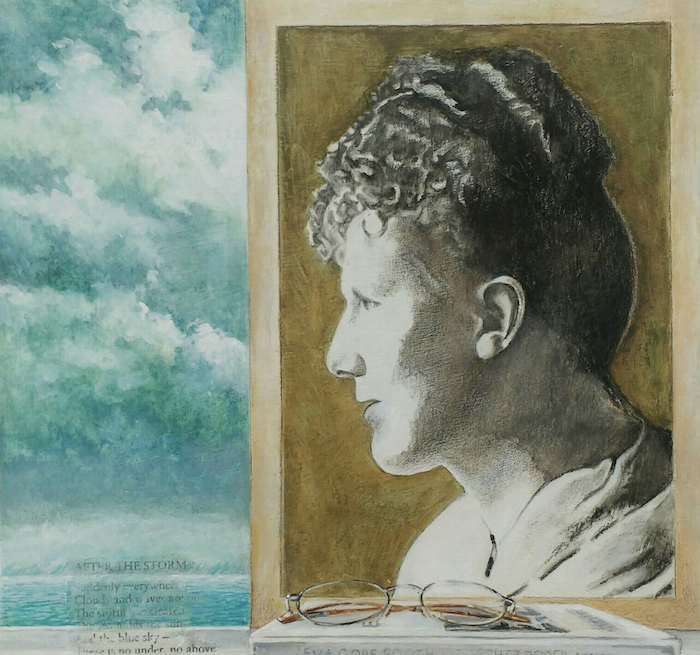
Eva Gore Booth identified herself as Irish and Breffny was the medieval kingdom that stretched from her home Lissadell beach .
Some lines from the poem “The little waves of Breffny”
The great waves of the Atlantic sweep storming on their way
Shining green and silver with the hidden herring shoal
But the little waves of Breffny have drenched my heart in spray
And the little waves of Breffny go stumbling through my soul.
She lived life in service to working women, she defended textile mill workers, barmaids, attendants in hotels, florists , women working as tub pullers outside the mines, gymnasts and circus performers , all whose jobs were threatened either because of alleged moral grounds or other reasons.
She famously said “The laws of gravity apply to men and women alike”. Which brings us to the circus.
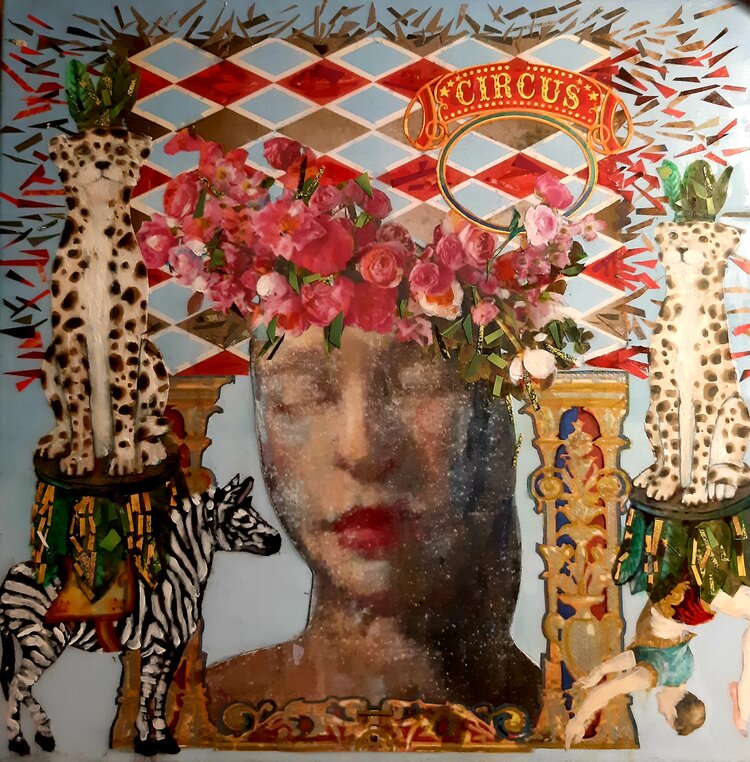
You can see Mebh Gillard’s playful work called “Little Evies Circus Dreams” reminds me of Eva Gore-Booth’s work for circus performers. There are leopards , zebra and an acrobat. Eva Gore-Booth was an animal lover and also a strict vegetarian .
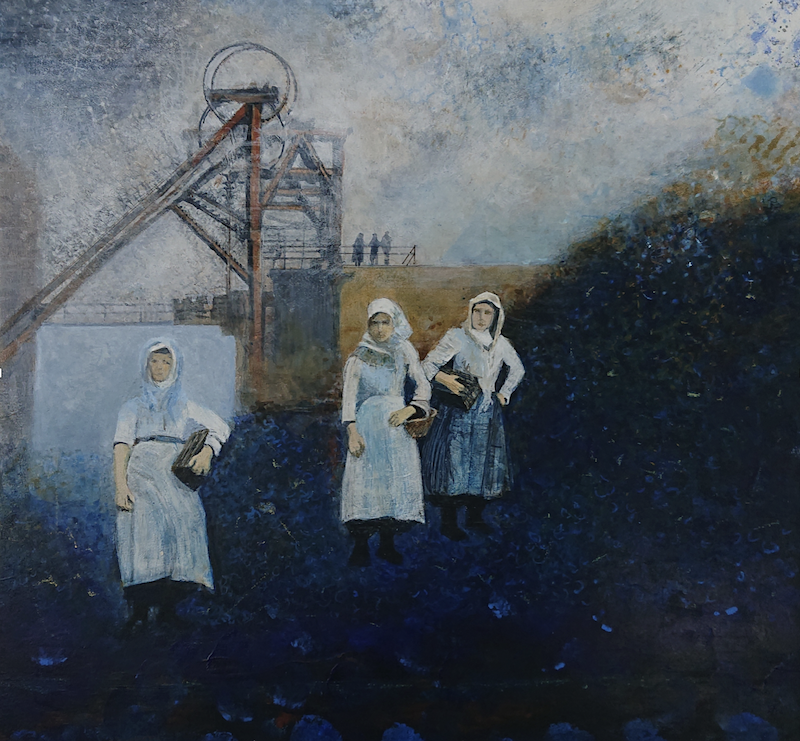
The work titled Pit Brow Lasses refers to when Eva Gore-Booth went to work as a tub puller at the mines to show that a woman could do this work.

Emma Stroude’s work shows factory workers in Manchester
Other works signal elements of the textile industry.
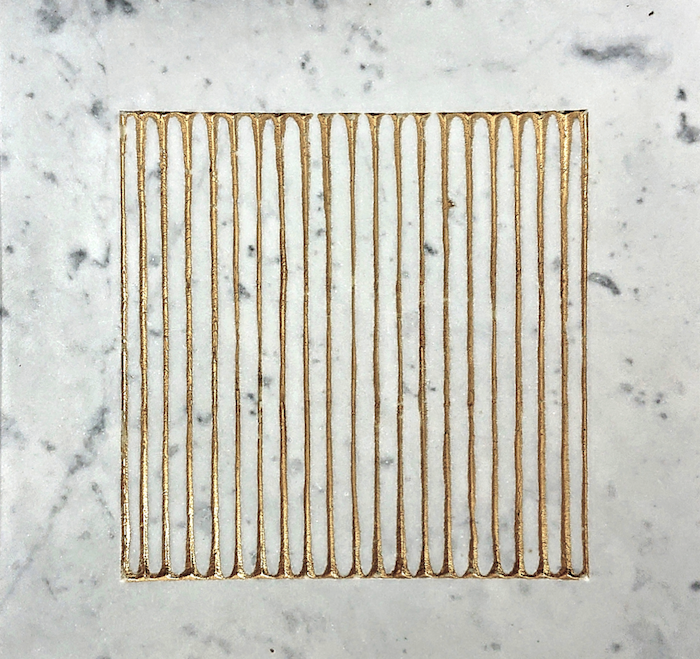
Martha Quinn’s striking but simple marble and gold work titled ‘Loom ‘
From Eva Gore-Booth’s poem The Weaver I can imagine the rhythms of work at the loom and also notions of time passing.
“I followed the slow plough for hours and hours
Minding through sun and shower the loom of life.”
Those gold lines upon the marble also suggests imprisonment which her sister Constance experienced numerous times because of her nationalist activities.
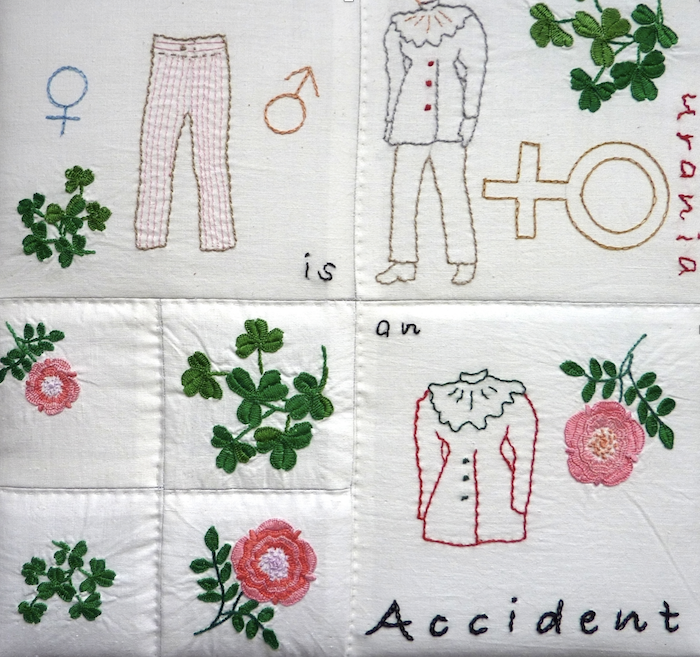
Staying with the textile industry Sue Morris embroidery called ”Sex is an Accident “ hints at the mills and textile industry and calls for gender equality.
Other artworks focus on Eva Gore-Booth’s poetry

The beautiful monochrome work by Sorca O Farrell matched with the exquisite line from the poem “the Dreamer “
“… all night I stumble through fields of light “.
Two Ladies by Betty Brown shows the two sisters on horseback.

Seeing the two sisters with horses and also Roper in the background reminds me of a special incident in Manchester where all three women were defending the Barmaid issue 1908 before a local election. They were campaigning against Churchill who was against many working rights for women.
Eva Gore-Booth organized a striking coach with four white horses driven around Manchester two days before local election. Markievicz came from Ireland to Manchester and was at the whip driving. After arriving at a fixed point Gore Booth and Roper stood on top of the coach roof to give a rousing speech on Clause 20 of the Licensing bill which threatened the work of Barmaids. One anecdote was recorded at a meeting later, a man in the crowd shouted “Can you cook a dinner Countess?” To which she answered “Certainly , can you ride a coach and four?”
Churchill was surprised to be defeated in that local election
Eva Gore-Booth also studied Greek and Latin and in the last three years of her life she translated the entire gospel of John. She reinterpreted the language used to pin point inaccuracies which guide toward patriarchal dominance and female exclusion in society.
Both Gore-Booth and Ester Roper worked hard in presenting Sappho’s work in a socially romantic context.
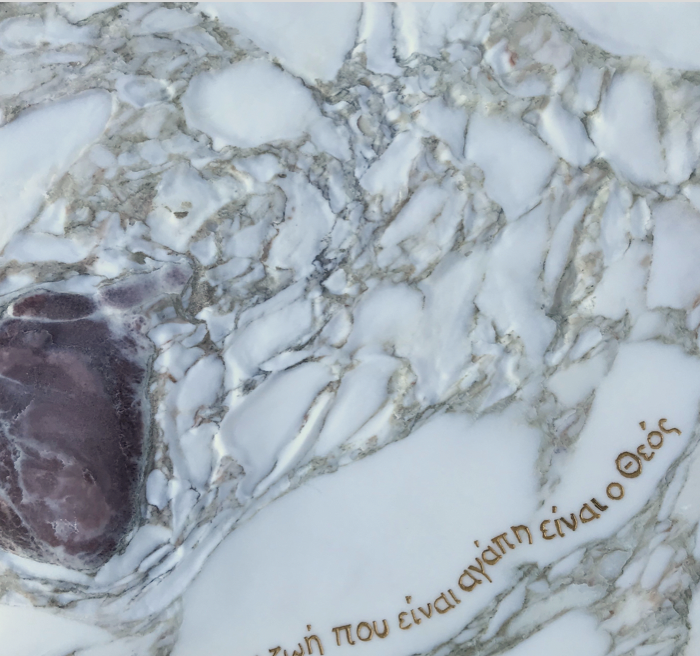
In another work, a white marble work , the Greek words from the poet Sappho “Life that is Love is God” The artist Eileen Mac Donagh says that the flesh coloured streak refers to EGB as as a woman passionate in all things.
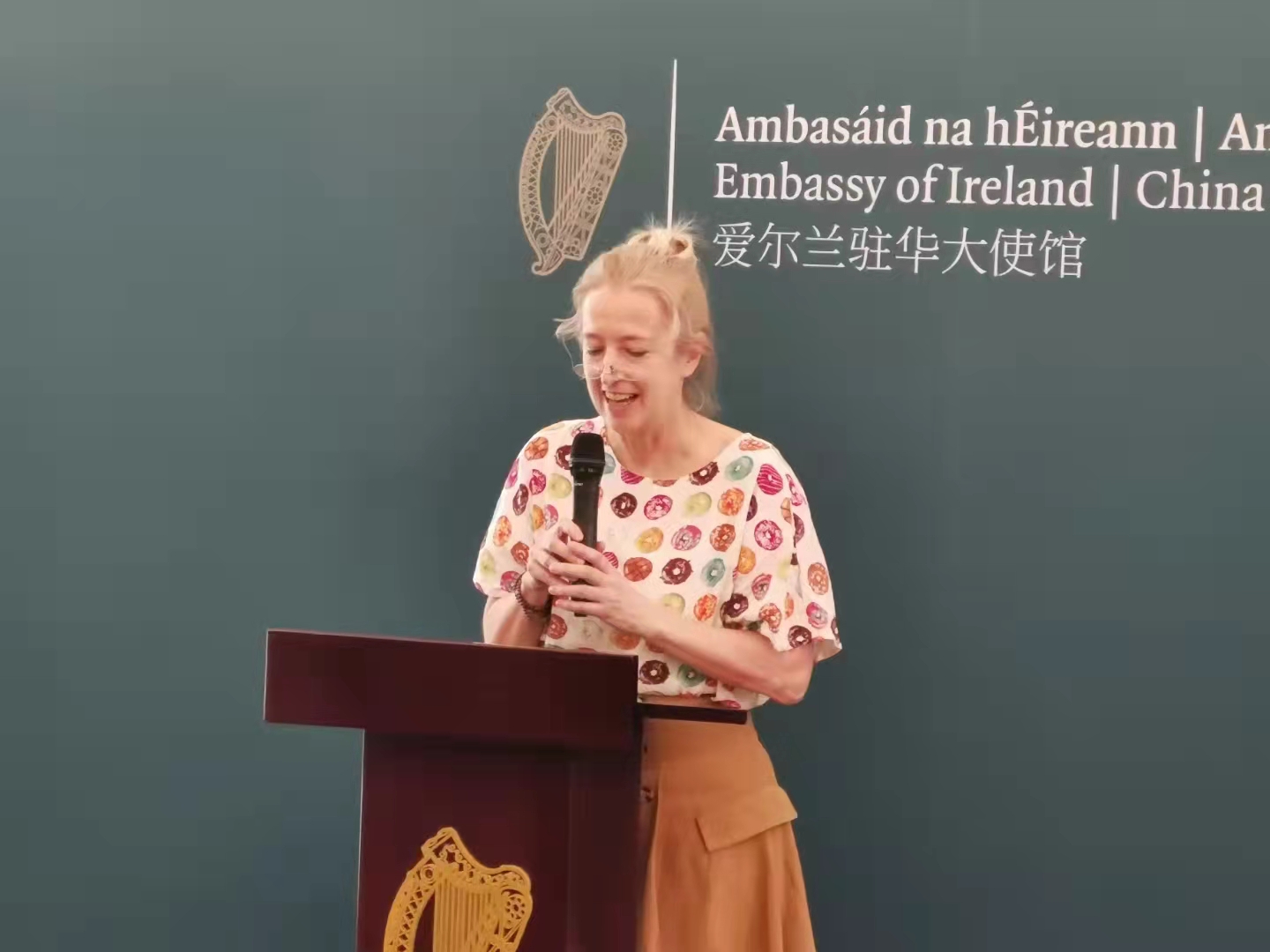
Recommended reading “Eva Gore Booth- An image of such politics” by Sonja Tiernan.
